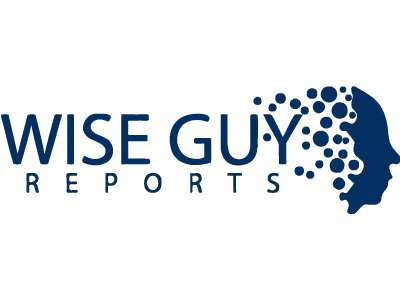Chemicals Industry Today
Self Repair Material Market reach a valuation of USD 2.5 Billion, growing at a 9.16% CAGR by 2032
The global self-repair material market is experiencing significant growth, driven by advancements in material science and increasing demand across various industries. Self-repair materials, also known as self-healing materials, have the ability to autonomously repair damage without human intervention, thereby enhancing the durability and lifespan of products.
Market Overview
The self-repair material market was valued at approximately USD 1.14 billion in 2023 and is projected to reach USD 2.5 billion by 2032, growing at a compound annual growth rate (CAGR) of 9.16% during the forecast period from 2025 to 2032.
Key Market Drivers
- Increasing Demand for Sustainable Materials
As industries strive to reduce waste and enhance product longevity, there is a growing preference for materials that can self-repair. These materials contribute to sustainability by reducing the need for replacements and minimizing environmental impact.
- Advancements in Material Science
Innovations in polymer chemistry, nanotechnology, and bio-inspired design have led to the development of more efficient self-repair materials. These advancements enable materials to heal autonomously, restoring their original properties and functionality.
- Cost-Effectiveness
Self-repair materials can reduce maintenance costs by minimizing the frequency of repairs and replacements. This cost-effectiveness is particularly appealing in industries where downtime and maintenance expenses are significant concerns.
Download Exclusive Sample Copy of this Report here: https://www.wiseguyreports.com/sample-request?id=647835
Market Segmentation
The self-repair material market can be segmented based on application, material type, functionality, end-use, and region.
- By Application:
- Aerospace: Self-repair materials enhance the durability of aircraft components, reducing maintenance needs.
- Automotive: Incorporation of self-healing materials in vehicles improves their lifespan and reduces repair costs.
- Electronics: Self-repair materials in electronic devices enhance reliability and performance.
- Construction: In the construction industry, self-healing materials are used to repair cracks in structures, extending their lifespan.
- Medical: Self-healing materials are utilized in medical devices and implants to improve their functionality and longevity.
- By Material Type:
- Polymers: Including shape memory polymers and thermoplastic elastomers, these materials can return to their original shape after deformation.
- Composites: Reinforced materials that combine self-healing polymers with other materials for enhanced properties.
- Metals: Metallic materials with self-healing capabilities are used in high-stress applications.
- Ceramics: Ceramic materials with self-repair properties are employed in applications requiring high-temperature resistance.
- By Functionality:
- Self-Healing Polymers: Polymers that can autonomously repair damage.
- Self-Healing Composites: Composite materials that incorporate self-healing mechanisms.
- Self-Healing Coatings: Protective coatings that can repair themselves when damaged.
- Self-Healing Adhesives: Adhesives that can restore their bonding strength after damage.
- By End-Use:
- Consumer Goods: Self-repair materials are used in products like smartphones and wearables.
- Industrial Goods: Incorporation of self-healing materials in industrial equipment reduces maintenance needs.
- Infrastructure: Self-healing materials are applied in infrastructure projects to enhance durability.
- Healthcare: Medical devices and implants benefit from the use of self-repair materials.
- By Region:
- North America: Leading in the adoption of self-repair materials due to technological advancements.
- Europe: Strong emphasis on sustainability drives the demand for self-healing materials.
- Asia Pacific: Rapid industrialization and infrastructure development contribute to market growth.
- South America: Emerging markets show increasing interest in self-repair materials.
- Middle East & Africa: Growing industrial sectors drive the demand for durable materials.
Key Companies in the Self-Repair Material Market Include:
- Eastman Chemical Company
- BASF
- Dow Chemical Company
- SABIC
- Wacker Chemie AG
- Covestro
- LG Chem
- Momentive Performance Materials
- AkzoNobel
Buy Now & Get Exclusive Discount on this Report: https://www.wiseguyreports.com/checkout?currency=one_user-USD&report_id=647835
Challenges and Opportunities
Challenges:
- High Production Costs: The manufacturing processes for self-repair materials can be complex and costly.
- Limited Awareness: Lack of awareness about the benefits of self-repair materials may hinder market adoption.
- Technical Limitations: Current self-repair materials may have limitations in terms of repair speed and effectiveness.
Opportunities:
- Research and Development: Investing in R&D can lead to the development of more efficient and cost-effective self-repair materials.
- Emerging Markets: Expanding into emerging markets presents opportunities for growth.
- Collaborations: Partnerships between industries and research institutions can accelerate the commercialization of self-repair materials.
Future Outlook
The self-repair material market is poised for significant growth, driven by technological advancements and increasing demand across various industries. Continued research and development efforts are expected to overcome current limitations, leading to more efficient and cost-effective solutions. As industries continue to prioritize sustainability and durability, the adoption of self-repair materials is anticipated to rise, shaping the future of material science and engineering.
Translation of the Report in Different Languages:
セルフリペア素材市場 | Selbstreparaturmaterialmarkt | Marché des matériaux d'auto-réparation | 셀프 리페어 소재 시장 | 自修复材料市场 | Mercado de materiales de auto-reparación
Browse Related Reports:
Glycan Biosynthesis Market | Japan | German | French | Korean | China | Spanish
Fishmeal And Fishoil Market | Japan | German | French | Korean | China | Spanish
Geraniol 60 Market | Japan | German | French | Korean | China | Spanish
Floor Tile Caulk Market | Japan | German | French | Korean | China | Spanish
Explosion Proof Paint Market | Japan | German | French | Korean | China | Spanish
Evoh For Packaging Market | Japan | German | French | Korean | China | Spanish
Fuberidazole Market | Japan | German | French | Korean | China | Spanish
Flat Glass Fiber Market | Japan | German | French | Korean | China | Spanish
Flexible Aluminum Duct Market | Japan | German | French | Korean | China | Spanish
Euv Film Market | Japan | German | French | Korean | China | Spanish
Share on Social Media



Other Industry News
Ready to start publishing
Sign Up today!








